New – Failover Controls for Amazon S3 Multi-Region Access Points
We launched Amazon S3 Multi-Region Access Points to give you a global endpoint that spans S3 buckets in multiple AWS Regions. With S3 Multi-Region Access Points, you can build multi-region applications with the same simple architecture used in a single Region. This cool and powerful feature uses AWS Global Accelerator to monitor network congestion and connectivity, and to route traffic to the closest copy of your data. In the event that connectivity between a client and a bucket in a particular Region is lost, the Multi-Region Access Point will automatically route all traffic to the closest bucket (synchronized via S3 Replication) in another Region.
In addition to the use case that I just described, customers have told us that they want to build highly available multi-region apps and need explicit control over failover and failback.
New Failover Controls
Today we are adding failover controls for Multi-Region Access Points. These controls let you shift S3 data access request traffic routed through an Amazon S3 Multi-Region Access Point to an alternate AWS Region within minutes to test and build highly available applications for business continuity.
The existing Multi-Region Access Point model treats all of the Regions as active and can send traffic to any of them. The model that we are introducing today lets you designate Regions as either active or passive. Buckets in active Regions receive traffic (GET, PUT, and other requests) from the Multi-Region Access Point, buckets in passive Regions don’t. Amazon S3 Cross-Region Replication operates regardless of the active or passive status of a Region with respect to a particular Multi-Region Access Point.
To get started, I create a new Multi-Region Access Point that refers to two or more S3 buckets in distinct AWS Regions. I enter a name for my Multi-Region Access Point (jbarr-mrap-1), and choose the buckets:
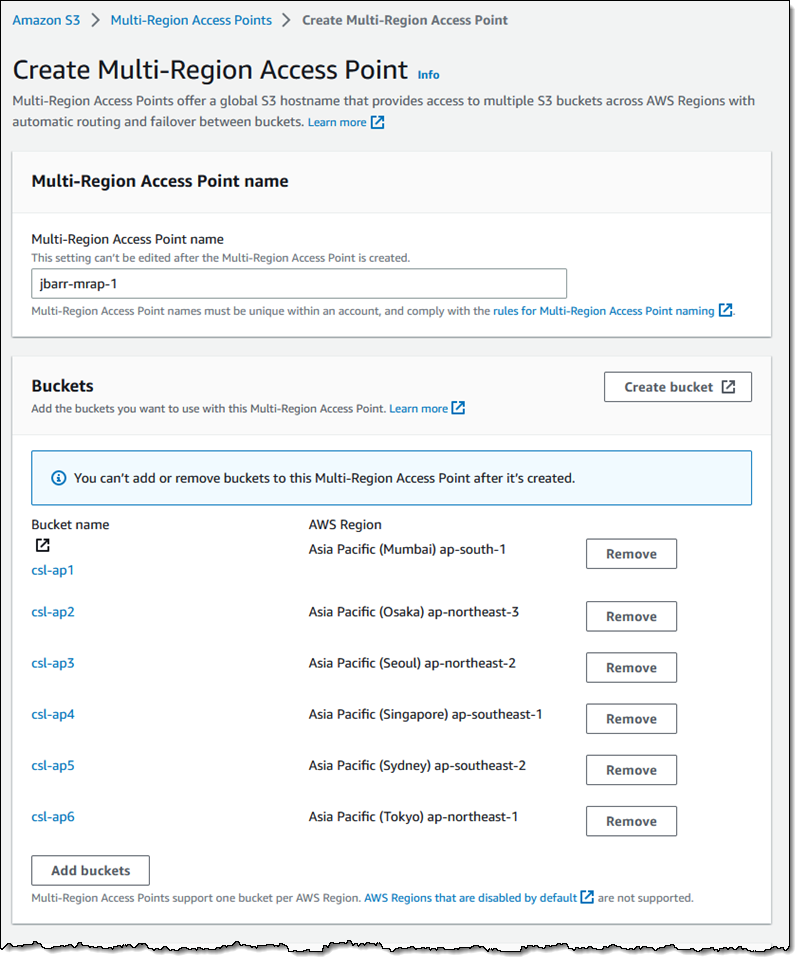
I leave the Amazon S3 Block Public Access settings as-is, and click Create Multi-Region Access Point:
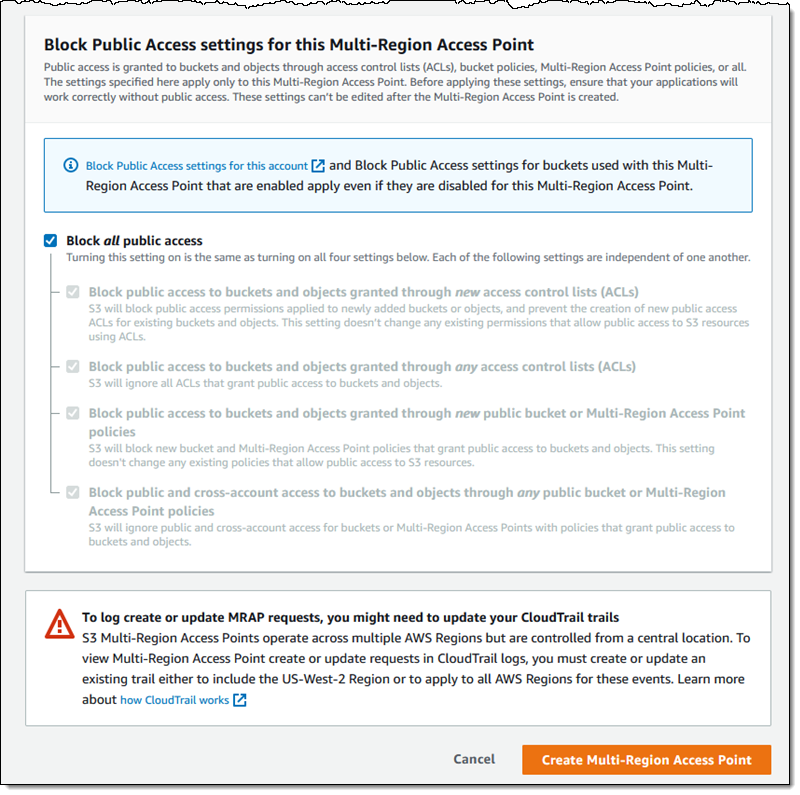
Then I wait until my Multi-Region Access Point is ready (generally just a few minutes):

By default, my new Multi-Region Access Point routes traffic to all of the buckets, and behaves as it did before we launched this new feature. However, I can now exercise control over routing and failover. I click on the Multi-Region Access Point, and on the Replication and failover tab (which used to be just a Replication tab). The map now allows me to see my replication rules and my failover status:

I can scroll down to view, create, and modify my replication rules:

As you can see, the replication rules that I created for this demo preserve the storage class. S3 Intelligent-Tiering is generally a better choice, since I would get automatic cost savings without increased data retrieval costs after a failover. I can use S3 Replication metrics to make sure that my replication rules are proceeding as expected. Also, S3 Replication Time Control provides a predictable replication time (backed by an SLA), and should also be considered.
The tab also includes the failover configuration:
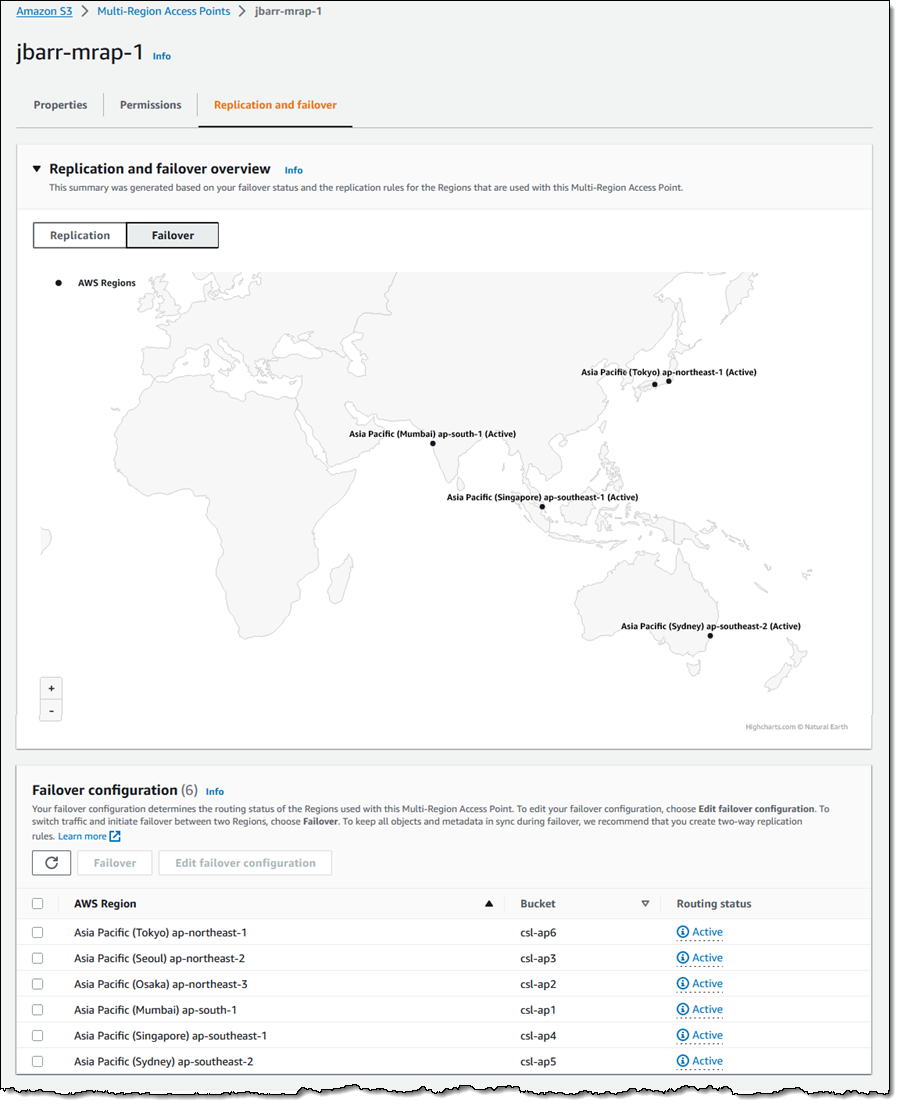
To change my failover configuration, I select the buckets of interest and click Edit failover configuration. My application runs in the Asia Pacific (Tokyo) Region and makes use of a bucket there, so I leave the Tokyo Region active and make the others passive:
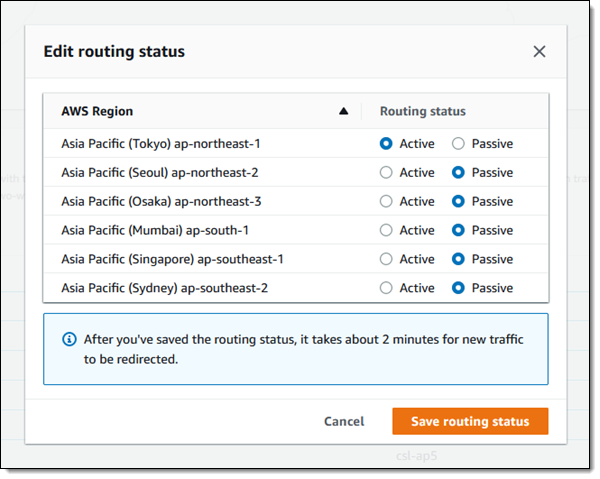
All is well until one fine day Godzilla wakes up and eats all of the submarine cables in and around Tokyo. I quickly pull up the console, return to the Failover configuration, select the active Tokyo Region and the passive Osaka Region, and click Failover:
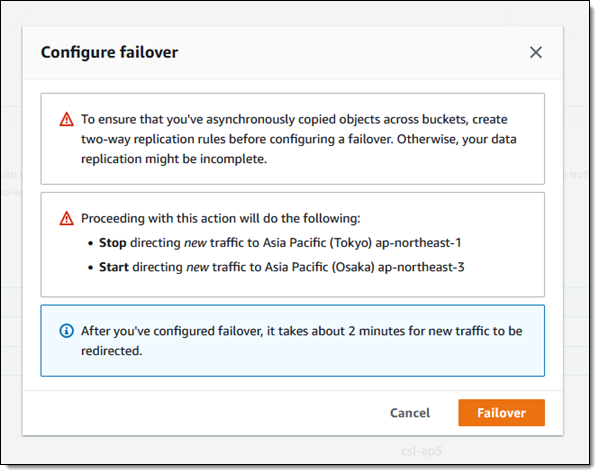
I confirm my intent, click Failover again, and the failover is complete within two minutes:

Later, after Godzilla has been subdued and the cables have been repaired, I can fail back to the original bucket in the Tokyo Region:

Things to Know
Here are a couple of things to keep in mind as you start to make use of this important new AWS feature:
Active/Passive – There must be at least one active Region at all times.
CLI & API Access – You can initiate a failover programmatically by calling SubmitMultiRegionAccessPointRoutes. You can retrieve the current set of routes by calling GetMultiRegionAccessPointRoutes. The endpoints for these APIs are available in the US East (N. Virginia), US West (Oregon), Asia Pacific (Sydney, Tokyo), and Europe (Ireland) Regions.
Pricing – There is no extra charge for this feature beyond the use of the new APIs, which are billed as standard S3 GET and PUT requests. For S3 Multi-Region Access Point usage prices, see the Data transfer tab of the Amazon S3 Pricing page.
Regions – This feature is available in all AWS Regions where Multi-Region Access Points are currently available.
— Jeff;
Source: AWS News